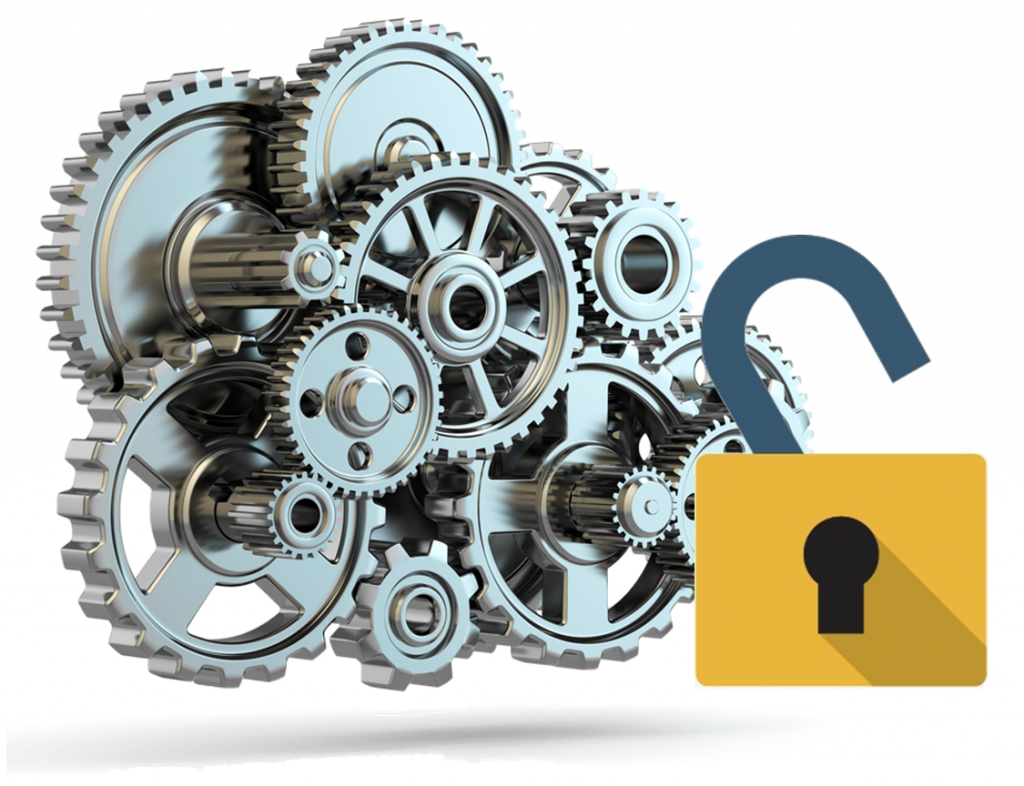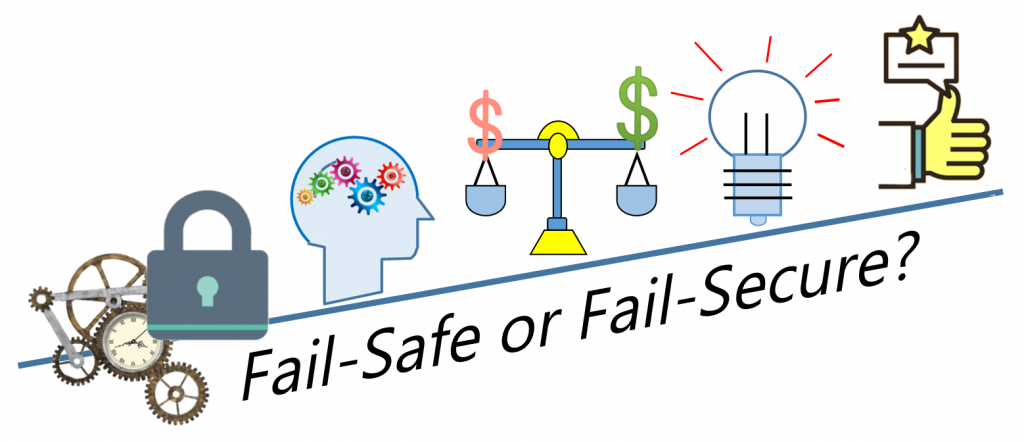Door Access Control and How to Configure the Electric Lock

Configuring the electric lock is an essential part of your access control system installation. The electric lock can be configured for Fail-safe or Fail-secure. What is better? The answer is not that simple. Here are some of the frequently asked questions that we received. The answers will help you decide how to configure your door access control system.
Q: In an access control system, what are the differences between fail-safe and fail-secure? Are they referring to the door, the lock, or the access control system?
A: These terms refer to how the electric lock is powered and wired. This is important during a power failure and when there is a fire or other emergency. The “secure” or “safe” modes are defined by people entering the door.
Fail-secure, is also called Fail-locked or non-fail safe. In this configuration, the door stays locked if there is a power failure. The electric strike requires current to open the lock so if power is lost, the lock stays shut. People can’t get in if the door has a strike in the fail-secure configuration and a power failure occurs. But, people can still exit by turning the knob from the inside. A maglock would require a backup battery to be configured in a fail-secure configuration.
Fail-Safe, or in fail-open configuration, the door is unlocked if there is a power failure. A maglock is an example of a fail-safe type of lock because it requires a current to stay closed so this is “safer” in a fire.
Q: For the end-user, why is it important to know the differences between fail-safe and fail-secure?
A: The end-user should understand the safety implications of both configurations. There are two situations to consider when installing the locks used in an access control system:
Power Failure: A fail-secure keeps people out. Fail-safe allows people to enter.
Fire or other Emergency: people can leave the building in an emergency when the locks are In a fail-safe mode. It also allows emergency personnel to enter the building.

Q: Are there specific doors/entry points in the building that fail-safe electric locks can better serve? Are there other access control points that are better served by fail-secure? Why?
A: In most cases, the user makes the decision based on security versus safety. There may be a reason to use fail-secure in internal doors. For example, you may want to keep the computer room secure during a power failure. But, remember, if there is a fire in the computer room, there is a need to allow the fire emergency people to enter the room.
If necessary the lock on the door can include a key that can be used when there is a power failure. The door can be unlocked even if the power is off.
Q: I read that “Electric strikes on fire doors must be fail-secure, so the door is positively-latched if there is a fire. Doing so keeps areas and stairwells closed-off to help keep a fire from spreading. While you need a fail-secure electric strike, it’s recommended to have a fail-safe door.” Can you explain this a bit? How can you have fail-secure and fail-safe at the same time?
A: Staircase doors require a complicated strategy because people may need to use them in an emergency. You don’t want to prevent people from using a stairway in a fire if that is the only exit. You also don’t want to prevent egress from the stairwell to outside safety.
The local fire codes define how your access control works, but here are some things to consider. The lock can be configured separately for exit and entry. Doors with maglocks are fail-safe when power is lost (and there is no backup power). If the power is on, these locks can be equipped with exit devices that facilitate exit in a fire. For example, a door can include a REX (Request to Exit) button, a motion detector, a crash bar, or a power control from the fire alarm box that assures the door is easily opened in an emergency. When exit mechanisms are used, the maglock lock becomes safe for egress even when power is on but remains secure for entry. The electric strike can also be configured to stay locked when power is on or off. The strike provides an easy exit because the person can turn the knob to exit.
Q: As an end-user, how do I know if I should use fail-safe, fail-secure, or a little bit of both? What are some of the factors based on which to decide?

A: The decision is between security (keeping doors closed during a power failure) versus safety (ensuring that the doors are opened in a fire or other emergency). Local fire codes determine the locking mode of your access control system. Usually, the fire code indicates that the doors should all be opened during a fire (fail-safe). For egress, the electric strike is easier to deal with than a maglock. A door with a strike can be opened from the inside by turning the knob. If the power is on, the maglock stays closed, so you need additional exit equipment to make it safe in an emergency. Some fire codes indicate that fire and emergency personnel must be allowed entry if there is an emergency. In this case, the lock must be fail-safe.
Q: In terms of installing my door access control system, which is harder to install, fail-safe, or fail-secure? Or pretty much the same? How about cost? Which one is more expensive?
A: When using a strike, there is usually no difference in cost or installation. Most strikes have two modes that are selected by the wiring. Maglocks would require an extra battery to provide power during a power failure, so they are more expensive and more complicated to install. For more information, see my article Access Control and Fire Alarm System Integration.
Summary Access Control Fail-Safe and Fail Secure
The answer to what type of electric lock you should use is determined by whether you require safety or security and, in many cases, the fire codes for your region. For more details, take a look at the article, Fail safe vs. fail secure: Why you should know the difference.
If you would like help selecting your door access control systems, please contact us at 800-431-1658 in the USA, 914-944-3425, everywhere else, or use our contact form.